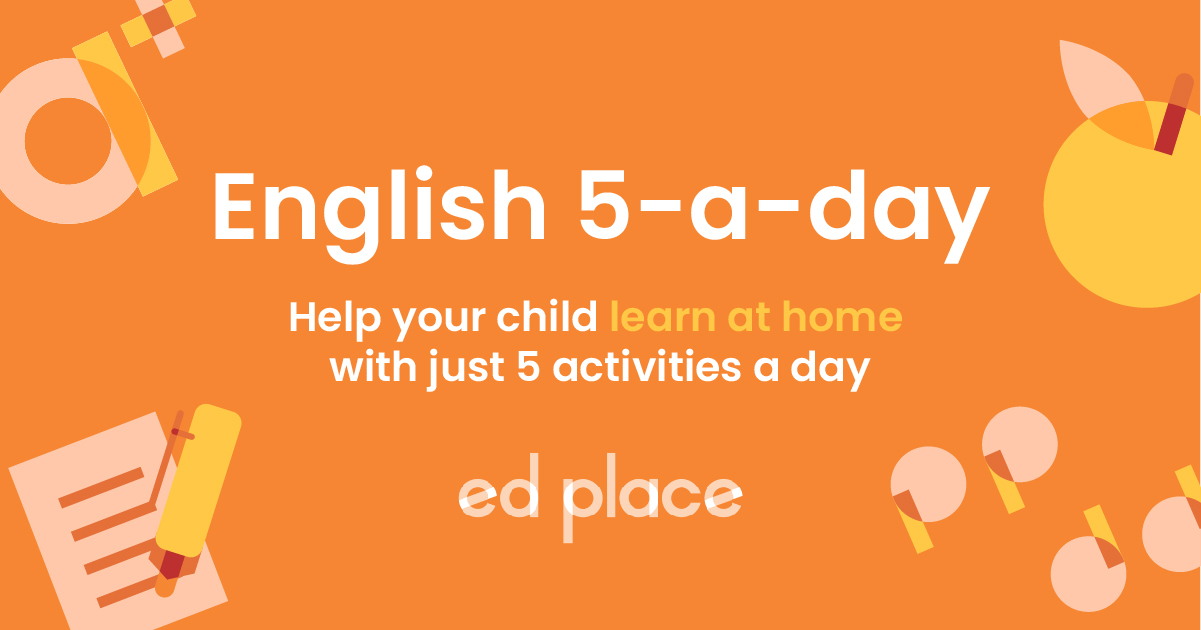
EdPlace's Year 4 Home Learning English Lesson: Clauses
Looking for short lessons to keep your child engaged and learning? Our experienced team of teachers have created English, maths and science lessons for the home, so your child can learn no matter where they are. And, as all activities are self-marked, you really can encourage your child to be an independent learner.
Get them started on the lesson below and then jump into our teacher-created activities to practice what they've learnt. We've recommended five to ensure they feel secure in their knowledge - 5-a-day helps keeps the learning loss at bay (or so we think!).
Are they keen to start practising straight away? Head to the bottom of the page to find the activities.
Now...onto the lesson!
Clauses (and it's not related to Santa!)
How much do we think about sentence structure in our everyday speech or reading? The answer is probably, not a lot. However, the whole issue of clauses and phrases becomes important when we start writing, and it's here that your child might very well find themselves in a bit of a muddle. There are a few definitions to grasp, but this lesson will take the whole subject one step at a time to help you to build your child’s confidence in this area.
1) Understand the difference between main and subordinate clauses
2) Identify different types of clauses
3) Use a variety of conjunctions to join clauses together
Step 1: Vocab!
Here are some useful definitions to start your child off:
A sentence – includes a subject and a verb, and makes sense on its own.
A phrase – a group of words that does not include both a noun and a verb, or make sense on its own.
A clause – a group of words containing a verb that makes up part of a sentence.
A main clause – a clause that makes sense on its own.
A subordinate clause – a clause that only makes sense when attached to a main clause.
A compound sentence – a sentence made from joining together two main clauses.
A complex sentence – a sentence made from joining a subordinate clause with a main clause.
Step 2 - Digging into the definitions...
Your child may well be familiar with sentences and phrases from their earlier studies, but it does no harm to have a quick recap to check their understanding. What can they tell you about the following?
A sentence includes a subject and a verb, and can be made up of only one clause or several clauses. It always starts with a capital letter and ends in a full stop, question mark, exclamation mark or an ellipsis (three dots). Sentences can be statements, questions, exclamations, instructions or commands.
A phrase – a phrase is a group of words that is not complete on its own. It might include a noun or a verb, but never both of them. You can have a noun phrase that includes a noun, such as ‘my new furry hamsters’ or ‘the key to the puzzle’. You can also have a verb phrase that includes a verb, such as ‘should be leaving’ or ‘have driven’.
Step 3 - Off we go...
So, let’s take your child through clauses one step at a time.
A clause includes a subject and a verb and is made up of phrases. Sentences are made up of clauses, so a clause could make a complete sentence on its own or might need to be added to another clause to complete a sentence.
The main type of clause is called, you’ve guessed it, a main clause! The key thing for your child to remember about a main clause is that it makes sense on its own, without needing to add anything to it. This means that it includes a subject and an object, as well as a verb and is sometimes called an independent clause.
Here are some examples:
She loves baked beans on toast
The house is on the hill
The letters were delivered by the postman
The other clause your child will need to be able to recognise is a subordinate clause. This type of clause contains a subject and a verb, but it cannot make sense on its own so that it is dependent on being attached to a main clause. A subordinate clause is generally introduced using a connective of some sort.
Here are some examples:
because the clock had stopped
after they finish tea
if we have time
So now, we join clauses together...
A sentence can be made up of either one clause on its own or more than one clause.
A sentence consisting of only one clause is called a simple sentence. It doesn’t necessarily have to be short but it must contain just one completed idea. For example,
We missed the bus.
I hate Mondays.
The huge, hairy spider scuttled away very quickly.
A sentence formed from joining two main clauses together is called a compound sentence and these two clauses are joined by a comma and a coordinating conjunction, or by a semicolon. There are seven coordinating conjunctions for, and, nor, but, or, yet, so. There is a useful mnemonic for remembering these: FANBOYS but you could always get your child to make up their own so that it sticks in their memory. Here’s our version: five angry nurses bounced on your sofa!
A sentence created from joining a main clause and a subordinate clause is called a complex sentence. The subordinate clause can come either before or after the main clause and usually begins with a subordinating conjunction, such as ‘because’, ‘although’, ‘if’, ‘when’, after’, ‘while’, ‘before’, ‘since’, ‘as, ‘until’ but there are many more.
When to use that confusing comma
There are so many rules concerning commas for your child to get their head around, but these two are comparatively easy to follow.
Rule 1: When joining two main clauses together with a FANBOYS conjunction, you need to add a comma before the conjunction.
I worked really hard at my homework, yet I still didn’t get full marks.
We went for a really long walk today, so Harry was exhausted by bedtime.
I think I might get my bike out, or should I stay in and watch television?
Rule 2: When joining a subordinate clause to a main clause, you only need to include a comma if the subordinate clause comes before the main clause. In the examples below, the main clause is in blue and the subordinate clause in green:
I must finish clearing up before I watch television. (no comma needed)
Before I watch television, I must finish clearing up. (comma needed because the subordinate clause comes first)
All the snow melted because the temperature rose overnight. (no comma)
Because the temperature rose overnight, all the snow melted. (comma)
Step 4 - Now it's your turn!
Now it’s time to check out how your child is getting on with the following questions:
Are the following sentences simple, compound or complex?
1. Alfred needed me to untie his shoe laces.
2. Although we’re still allowed to go out for exercise, we have to stay close to home.
3. The sunset over the sea was beautiful this evening, and it made me feel happy.
4. We can have fish and chips for tea if we get back in time.
Can you identify the main clauses in the following sentences?
1. You need to turn the volume down when the phone rings.
2. Even if we don’t see any unusual creatures, I’m really glad we came.
3. The rain poured down all day, so we stayed inside and played board games.
No commas have been added to the following sentences. Can you see when and where we need to include them?
1. If you think that I’m going to let you have it now you can think again.
2. I’ll look after all the animals until you get back from holiday.
3. It must have been very hard for the family so I will do what I can to help.
4. Since he went away the garden has become overgrown with weeds.
5. Charlotte rushed to the door because she was expecting an important delivery.
Step 5 - Show what you know
We hope your child is feeling more confident with prefixes! If so, now is the perfect time for you to put them to the test. Here are some activities which will help to consolidate their learning. We recommend doing them in this order so that the learning builds progressively.
All activities are created by teachers and automatically marked. Plus, with an EdPlace subscription, we can automatically progress your child at a level that's right for them. Sending you progress reports along the way so you can track and measure progress, together - brilliant!
Activity 1: Main and Subordinate Clauses (Y3)
Activity 2: Sentence Composition: Phrases and Clauses
Activity 3:Sentence Composition: Single and Multi Clauses
Activity 4: Sentence Structure: Using 'If' 1
Answers
1. Simple
2. Complex
3. Compound
4. Complex
The main clauses:
1. You need to turn the volume down
2. I’m really glad we came.
3. There are two main clauses here: The rain poured down all day. We stayed inside and played board games. They are joined by the conjunction ‘so’.
Commas:
1. If you think that I’m going to let you have it now, you can think again.
2. No comma needed.
3. It must have been very hard for the family, so I will do what I can to help.
4. Since he went away, the garden has become overgrown with weeds.
5. No comma needed.
Keep going! Looking for more activities, different subjects or year groups?
Click the button below to view the EdPlace English, maths, science and 11+ activity library
All English, maths and science from Year 1 - GCSE








